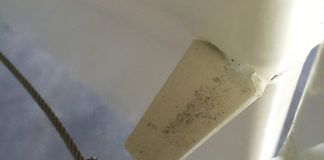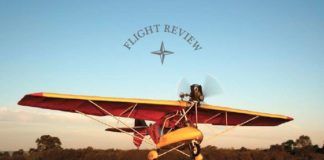Piper Aircraft, in the period following WW-II, proved incredibly prolific. Well documented—so let’s not get into detail here—the history of Piper’s seminal high-wing designs leads back to the Taylor E-2, an airplane penned by a company William T. Piper bought out of bankruptcy. By 1938, we had the J-3 Cub.
Production of the first Cub ended in 1947, but the desire to own one continued. By the 1960s, Dick Wagner, cofounder of Wag-Aero, enters the picture. His goal was to provide owners and restorers of J-3s (and other ragwing Pipers) a source for parts that were either completely unavailable from Piper or just marginally so. He bought up great quantities of new-old-stock J-3 parts from distributors, and attempted through the years to work with Piper to obtain the machines necessary to build certain J-3 parts.
The relationship was never cheerful, and came to gritted teeth when Piper sued Wag-Aero for trademark infringement of the product name Cub. At that time, Wag-Aero had decided to kit the J-3 for homebuilders, calling it the CUBy. Piper won the first round, Wag-Aero appealed, and lost again. A permanent injunction stood.
So It’s the Sport Trainer
Dave Klages’ airplane is, therefore, formally known as a Sport Trainer. We’re going to assume no Piper lawyers are in the room, so we can talk openly about its origins. Yes, it’s a J-3 at the core. Overall dimensions, airfoil choice, basic materials and concepts all closely follow the J-3 blueprint. That flat-bottomed, USA-1 airfoil wing spans a bit more than 35 feet and provides 178.5 square feet for the purpose of lofting the 1320-pound Sport Trainer aloft. No flaps, thanks.
Unlike the Texas Sport Cub or designs that emulate the later J-5 Cub—sometimes known pejoratively as “the fat Cub”—the Sport Trainer remains faithful to J-3 Cub fuselage dimensions. It should be said that we Americans have put on a few inches here and there since the Taylors put pencil to vellum in the 1930s. A cabin cozy for an early twentieth-century couple is something else entirely for a pair of twenty-first-century brutes. More about that shortly.
Modifications to the Idea
True to homebuilding form, the Sport Trainer is not a slavish rendition of the J-3. It uses an aluminum wingspar where the original preferred a sophisticated organic composite (wood). It has an electrical system with a battery on the passenger side of the firewall. So, ask all the J-3 fanatics, where do you put the fuel tank? Instead of tickling the front-seater’s toes, this tank is traded for one in each wing, capacity of 13 gallons. This systemic change along with a few other common rebalancing tactics allow the Sport Trainer to be flown solo from the front seat, where it’s roomier and view-ier. A Cub-appropriate 13-gallon header tank can also be used in lieu of the wing tanks, but you’re on your own to find room for the battery.
Original Cubs could have any of three opposed powerplants, from Continental, Franklin and Lycoming, though the Continental would become by far the most popular. By offering different engine mounts, Wag-Aero currently supports the Continental and later Lycoming engines; believe it or not, you can also fit a 150-horsepower O-320 to make your own quasi Super Cub. Klages found a great deal on an O-235 with a conical mount, sothat’s what you’ll find on the noisy side of N618DB’s firewall. It’s the right-sized engine to make Klages’ Sport Trainer LSA compliant. (Except for setting maximum gross weight to 1320 pounds, there’s not much else to do: The Sport Trainer easily meets the stall speed and limited maximum speed requirements.)
Because the O-235 is the “wrong” engine for a J-3 purist, you might as well cover it up with a J-5-style pressure cowl, one of the myriad options available to Sport Trainer builders. Grab a tall coffee and find a quiet room while you peruse them on the company’s web site. By mixing and matching components, you can probably create a truthfully unique Sport Trainer. One of the options Klages chose was the trimtab over the more traditional jackscrew for pitch trim, while he also opted for the non-counterbalanced elevators. He stayed with the more traditional X-braced landing gear with bungee cords in place of an available steel-spring pack. Needless to say, Klages also chose Cleveland brakes in place of period-correct expander drums, showing his good sense all around.
Get In, Exhale, Let’s Go
Back to the discussion about we humans growing over time. Proof is in the Sport Trainer. The front perch is reasonably roomy, though anyone nearing 6 feet tall will have legs bent and elbows touching ribcage much of the time. Getting in is the challenge, as even a flexible Klages makes clear as he clambers up, over and in. This is not a graceful movement, even for a gymnast. Maybe if you took a flying leap…
In the front seat, once settled, the view is vintage along the bottom of the huge wing, up over the narrow instrument panel and boot cowl, where a group of four tubes rises up to a central point a few inches ahead of your scalp. The view is almost clear enough to avoid doing S-turns…almost.
Get Back, Skinny Cat
Oh, but the back seat. That’s where it’s fun. I’m not overly large—let’s say 5-foot-9 and 190 beer-groomed pounds—but the back seat was like Yao Ming slipping behind the wheel of a Disneyland Autopia car. Rudder pedals with narrow horizontal members trap your feet. A control stick like the handle of a butter churn rises just inches from your chest. A Y-shaped shoulder harness for the pilot hovers in your field of view. While you can reach the sill-mounted throttle, it’s a difficult stretch to the trimtab lever along the left sidewall. Mixture control? Not quite. Carb heat? Uh, no. Mag switch and fuel taps…maybe, but probably not.
In modern terms, the back seat of the Sport Trainer is an ergonomic disaster. And yet, 10 minutes into the flight you don’t care.
With the O-235 up front, the Sport Trainer is a good performer. Takeoff roll was estimated at 300 feet after a slight rolling start. Add power, immediately push the stick forward to raise the tail, and allow the Sport Trainer to fly off at 35 mph indicated. Klages’ airplane does not carry a vertical-speed instrument, so my best guess is 600 to 700 fpm initially—though I confess I might have been fooled a bit by the gradient; at this speed, you seem to be elevating more than climbing. Wag-Aero says a C-85-equipped Sport Trainer climbs at 450 fpm. Propeller choices will, of course, determine how yours will perform.
An initial climb speed of 65 mph is what the airplane seems to seek. Soon, Klages and I were at 1000 feet agl, so I pulled the throttle back to 2300 rpm as we gradually journeyed to the practice area. With the window up (open) and door up (closed), the ride in the back was just fine, a tad breezy but welcome on this 80° F day at altitude.
Low-cruise handling is typical Cub. Roll response is lazy and indistinct off center, any turns punctuated by a dessert-sized topping of adverse yaw. To my surprise, the Sport Trainer is extraordinarily trim stable. Trim for any given speed, and it takes an armful of force to displace the airplane. It just wants to stay where you trimmed it, which is partly because the tab is large and effective, and partly because the non-counterbalanced elevators are naturally heavier in response.
Going Slow, Real Slow
We tried a few stalls once out in the practice area. Power off, the airplane broke—if that’s what you want to call the gentle burble—at 35 mph indicated. The rudder is plenty effective at this speed, though roll authority is nothing to brag about. We didn’t cross-control at this low speed, but you can see how the combination of lazy roll response and powerful rudder could lead unwary pilots into mayhem better known as a stall/spin. Many post-war trainers were designed specifically to avoid this kind of behavior, and now we, as enthusiasts, seek it again. Go figure.
Climbing to 3500 feet MSL—a calculated density altitude of about 5500 feet—to get a speed check only proves what the Sport Trainer is good for, and what it is not. With the Lycoming wide open, we saw 2625 rpm (using my PropTach; the mechanical onboard tach read 100 rpm low) and 98 mph IAS. Your whiz wheel will spit out 105 mph TAS, but don’t go making flight plans based on that number. So prodded, the Sport Trainer is resolutely unhappy. The windows rattle, fabric vibrates crazily, the engine note changes to a nasty growl, and practically every fiber of its not-quite-human being is shouting out: What the heck are you doing, son?
Right, good point. Pulled back to 2400 rpm (actual), we netted 90 mph IAS, for 98 mph TAS. Seems as though Klages’ airspeed indicator is a bit optimistic even then. A two-way GPS run gave us 92 mph average out and back. And yet at 2400 rpm, the airplane felt a bit edgy, like a liberal arts student gutting through Calculus 101. After the thrashing, I told Klages that a nice, 1000-foot-above flight back to the airport was in order, and if you’re not in a hurry, let’s try 2200 rpm.
Ah, there it is. The true Cub spirit. Airspeed bouncing between 75 and 80 mph indicated, controls freed up a bit, quieter and more soothing—this is the way the Sport Trainer was meant to be flown. We slipped over Interstate 15, choked with cars, spotted a large softball complex where I watched my daughter play a tournament—and I realized that I could make out the distinctive S-shaped toe scrub a good pitcher leaves ahead of the rubber. We lingered a bit and wondered how many people in the shopping center looked up and wished to swap places. So much fun on about 5.5 gph.
Back at the airport, a short approach using 65 mph as the initial target is followed by a big power reduction, quick swipe at the trim lever and a nice three-pointer in the near-calm conditions. Finding the awkward heel brakes proves unimportant when you’ll only use them to bring the airplane to its final stop in front of the hangar. Why the Piper Cub design—not to say the Sport Trainer is one, if you know what I mean—has survived in a world of “fast glass” and “homebuilt” turboprops is much less a mystery on mornings like this—and no surprise at all to an enthusiastic builder like Dave Klages.
For more information on the Wag-Aero Sport Trainer, call 262/763-9586, or visit http://www.wagaero.com.
.




